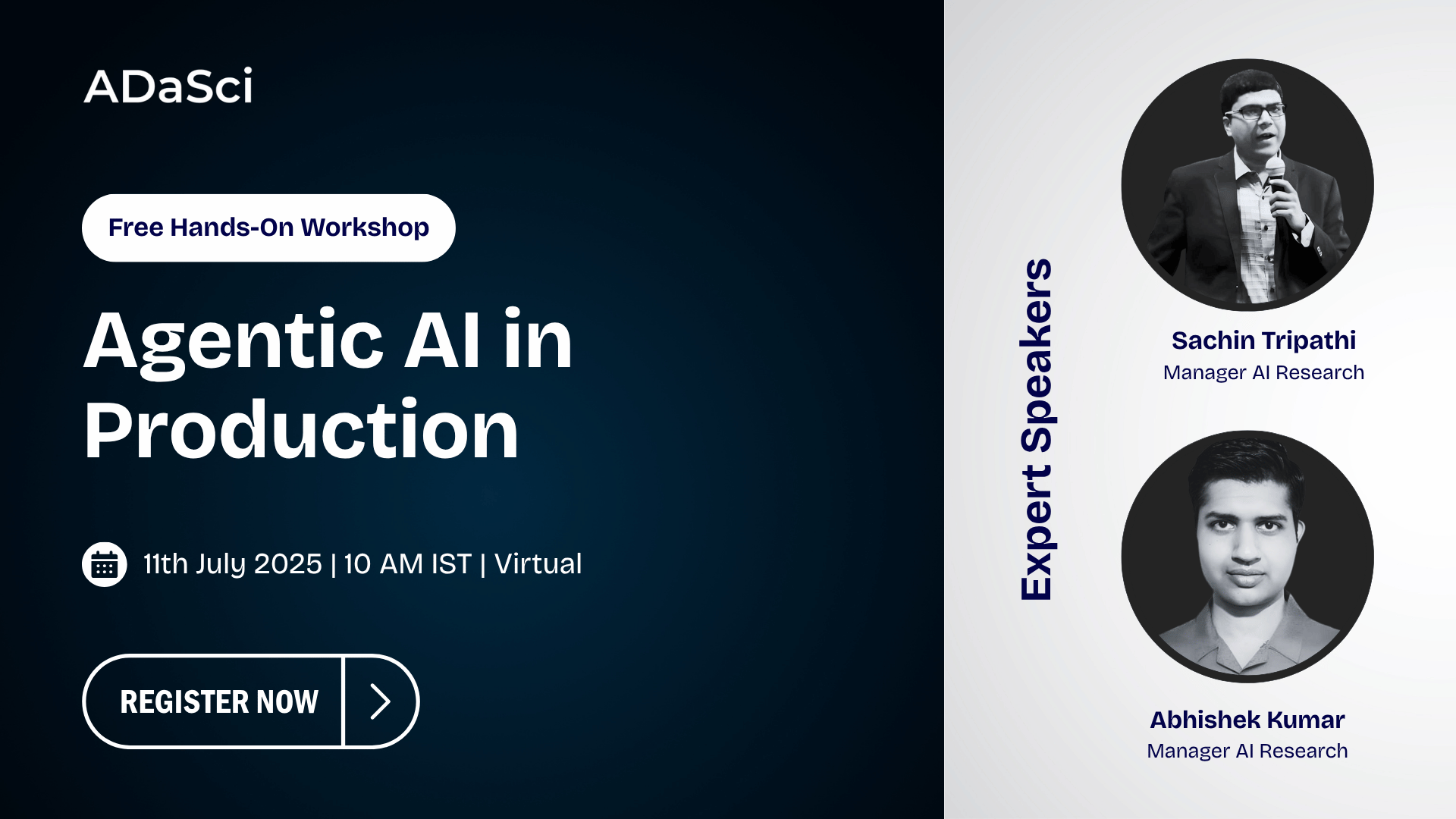The Rapid Evolution of Generative AI: Is Your Workforce Prepared?

Explore more from ADaSci
Generative AI (GenAI) is revolutionizing industries at an unprecedented pace, driving innovation, efficiency, and new business models. However, while organizations recognize its transformative potential, a critical challenge persists—ensuring their workforce is adequately prepared for adoption. The gap between technological advancement and workforce readiness is widening, and bridging this gap has become a strategic priority for enterprises worldwide.
The Fast-Paced Evolution of Technology
The evolution of AI, particularly Generative AI, is relentless. Over the past decade, we’ve witnessed groundbreaking advancements in areas such as Large Language Models (LLMs), AI-powered automation, and generative design tools. More recently, Agentic AI—AI systems capable of autonomous decision-making and task execution—has emerged, further pushing the boundaries of what AI can achieve.
The speed at which these technologies are disrupting industries is unmatched. Today’s cutting-edge tool could be tomorrow’s legacy system, making it essential for organizations to adopt a forward-looking approach. Staying ahead isn’t just about investing in new tools; it’s about equipping employees with the skills to use them effectively.
Upskilling Efforts Are Gaining Momentum
Many leading companies have already recognized the importance of workforce readiness and have taken steps to train their employees in Generative AI:
- Tata Consultancy Services (TCS) has trained 300,000 employees in GenAI skills, reflecting its commitment to AI-driven transformation.
- Infosys and Wipro have upskilled over 250,000 and 225,000 employees, respectively, ensuring that their workforce is equipped for the demands of AI-integrated projects.
- NTT DATA is working towards certifying 15,000 GenAI practitioners by the end of FY24, alongside broader AI training for 200,000 employees globally.
- Companies like Microsoft, IBM, and Capgemini have launched targeted programs focusing on AI literacy and advanced skill development.
Despite these efforts, many organizations still face challenges in keeping up with the rapid evolution of AI. Training programs often take months or even years to design and implement, but in that time, new technologies can emerge, requiring a fresh approach.
The Challenge of Keeping Pace
The reality is stark: by the time many organizations complete their upskilling programs, the AI landscape may have already shifted. Agentic AI serves as a prime example. As companies focus on training their employees in Generative AI, new technologies like autonomous AI agents are entering the scene, offering capabilities that demand a completely different set of skills.
This lag in workforce preparation can have severe consequences:
- Delayed Adoption: Without a trained workforce, enterprises may struggle to integrate new technologies into their operations efficiently.
- Loss of Competitiveness: Companies that fall behind in AI adoption risk losing their competitive edge, especially in fast-moving industries like finance, healthcare, and retail.
- Operational Inefficiencies: A lack of expertise can lead to suboptimal use of AI tools, reducing their potential impact on productivity and innovation.
To address this, organizations must align the pace of their upskilling initiatives with the pace of technological evolution.
Accelerating Workforce Readiness
How can enterprises ensure their workforce is prepared for the future? Here are some strategies to consider:
1. Adopt Continuous Learning Models
Training should not be a one-time effort. Enterprises must foster a culture of continuous learning, where employees regularly update their skills to match the latest technological advancements. This requires integrating learning into the daily workflow through microlearning modules, on-demand courses, and AI-powered training platforms.
2. Focus on Adaptability
Instead of focusing solely on specific technologies, organizations should emphasize adaptability. Teaching employees foundational skills in AI, critical thinking, and problem-solving can prepare them to work with a wide range of emerging tools.
3. Invest in Scalable Training Solutions
Scalable platforms, such as virtual training environments and AI-driven learning systems, allow enterprises to train large numbers of employees quickly and effectively. Companies like Intel and IBM have adopted scalable models to educate diverse workforces globally.
4. Collaborate with Industry Experts
Partnerships with academic institutions, AI vendors, and industry consortia can provide organizations with access to the latest training content and methodologies. For example, Microsoft’s AI co-innovation lab offers hands-on experience with emerging technologies.
5. Track and Measure Progress
It’s crucial to evaluate the effectiveness of training programs. By setting clear KPIs and using analytics tools to track employee progress, organizations can ensure that their workforce is genuinely prepared to apply new skills.
The Cost of Being Late
Delaying workforce readiness initiatives can be costly. A workforce unprepared for the demands of advanced AI tools will struggle to meet the organization’s goals, leading to lost revenue, inefficiencies, and a weakened market position. More importantly, late adopters often face higher costs as they scramble to catch up with competitors.
The enterprises that succeed in this era of technological transformation will be those that take a proactive approach, embedding training into their long-term strategy. By acting now, organizations can not only keep pace with the evolution of AI but also drive meaningful innovation and growth.
Final Words: A Call to Action
The future of AI is here, and it’s evolving faster than ever. Enterprises must rise to the challenge by accelerating the pace of their upskilling efforts to match the speed of technological advancements. This requires strategic foresight, robust training programs, and a commitment to continuous learning.
The race for AI adoption isn’t just about acquiring the latest tools—it’s about building a workforce capable of leveraging them effectively. For organizations, the time to act is now. Those who prepare their workforce today will lead the industries of tomorrow. Those who delay may find themselves struggling to catch up in an increasingly AI-driven world.







